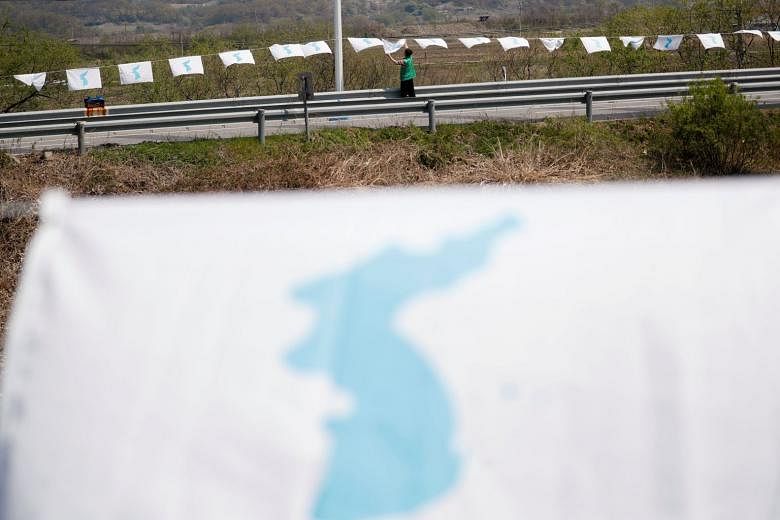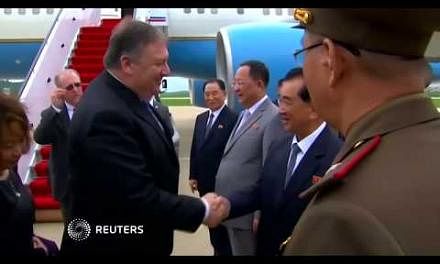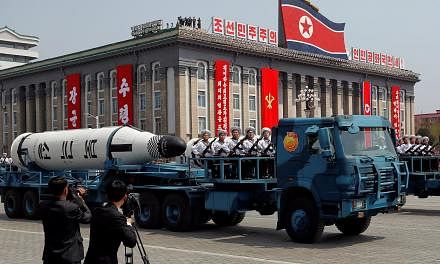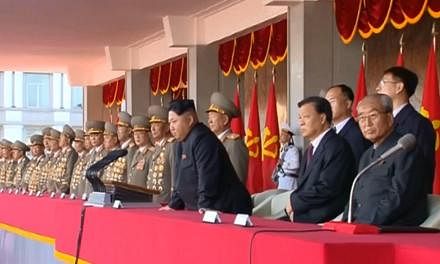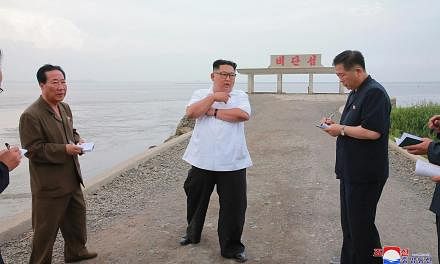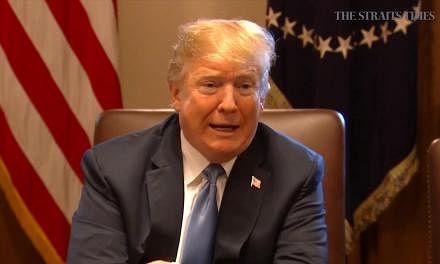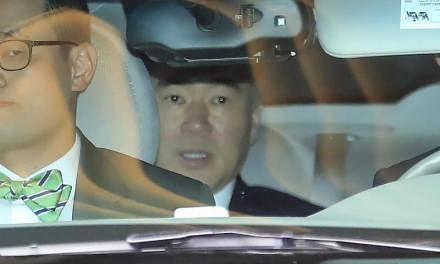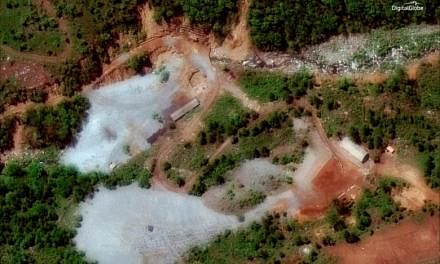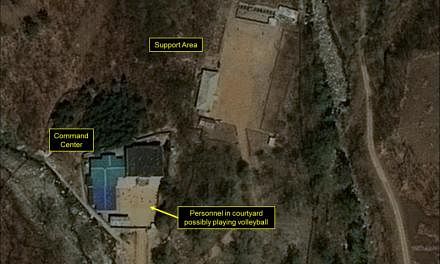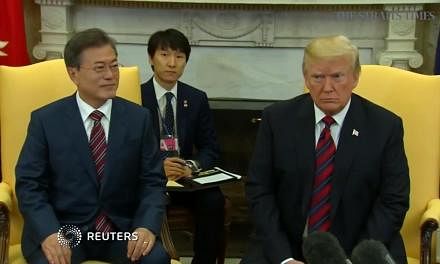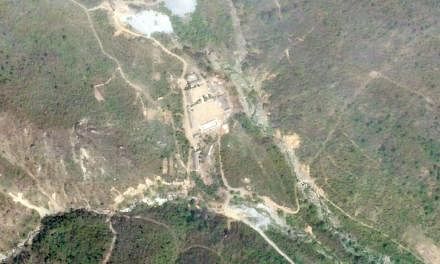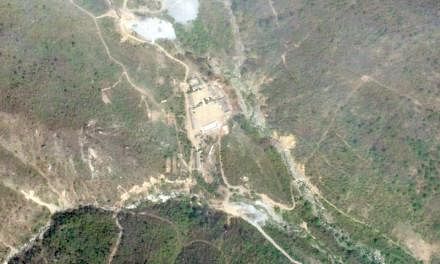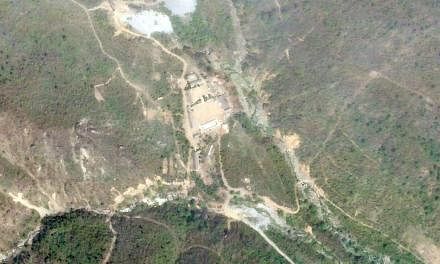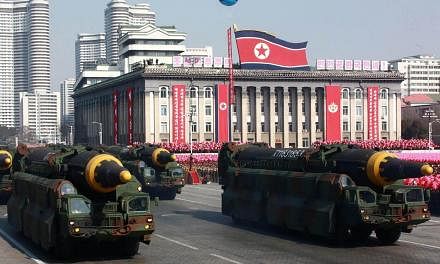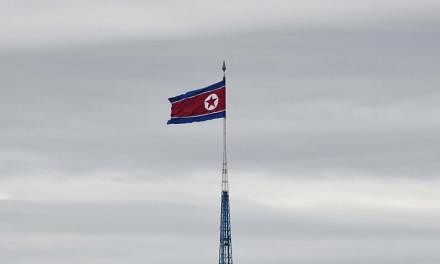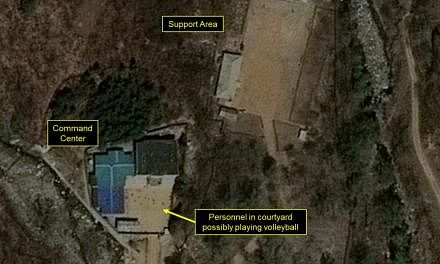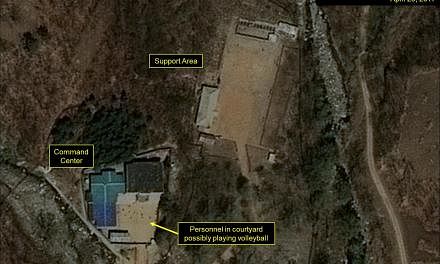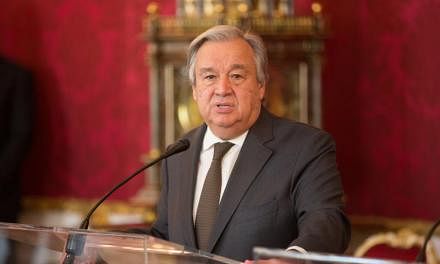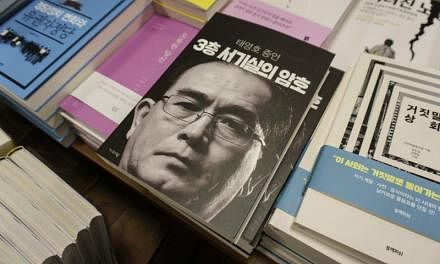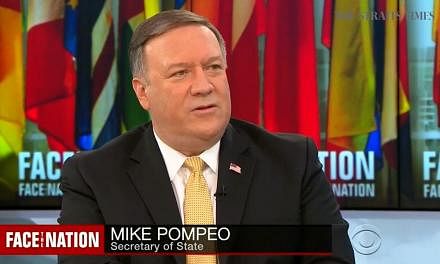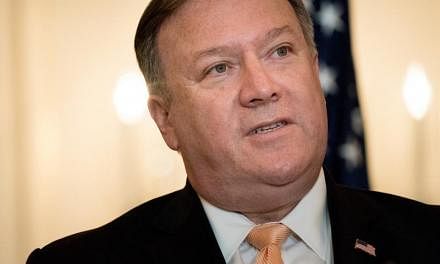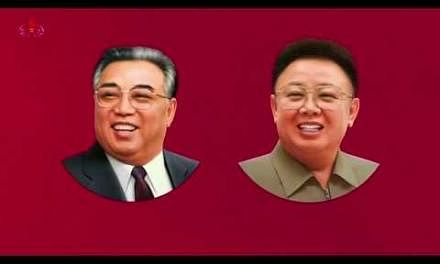HONG KONG (NYTIMES) - How do you make up after a 70-year break-up? It's not easy.
South Korea says it has been in talks with North Korea and the United States to formally end the 1950-53 Korean War, which was halted by an armistice, or truce, rather than a negotiated peace treaty, which means that the fighting ended, but the war did not.
The prospects of such a deal are still unclear. While the outlines of a peace accord have been considered for decades, there are drastic differences this time.
President Donald Trump's announcement that he would meet Mr Kim Jong Un, the North Korean leader, could lead to the first-ever direct meeting between leaders of the two countries.
But first, Mr Kim will meet President Moon Jae In of South Korea on Friday (April 27) in the Demilitarised Zone that divides their countries. The South's declaration that a deal to end the war formally is under consideration has raised expectations for their meeting.
PERMANENT PAUSE IN A BITTER WAR
A peace deal would replace the armistice that ended combat, if not the outbreak of small-scale hostilities, on the Korean peninsula but did not resolve the conflict between the two Koreas.
The armistice was a military document, setting forth the terms for a ceasefire. A peace agreement would have been a more complicated political agreement.
After the end of World War II in 1945, Korea, which had been a Japanese colony, was divided into two zones. The Soviets occupied the north, while the Americans occupied the south.
In 1948, the two sides formed their own governments, and in 1950, the North invaded the South. The United States led a United Nations force in alliance with the South, while China aided the North.
The 1953 armistice was signed at Panmunjom, a village in what became the Demilitarised Zone, by Lieutenant-General William Harrison, an American and representative of the United Nations forces, and General Nam Il, who represented North Korea and the Chinese forces.
It was signed later by North Korean leader Kim Il Sung, General Mark Clark, an American who led UN troops, and commander of the Chinese forces Peng Dehuai. They called themselves "volunteers". The South promised to observe the ceasefire but did not sign because it held out hopes of unifying the Korean peninsula.
The armistice set out terms for prisoner exchanges and created the specifics of the Demilitarised Zone, the buffer dividing North and South that is 4km wide.
WHAT WOULD REPLACE THE ARMISTICE?
While discussions of a peace deal often refer to a "treaty", a formal treaty would face significant obstacles.
The North and South both claim to be the rightful government of the entire Korean peninsula and representative of people on both sides. So a formal treaty would be met with significant questions of sovereignty.
And for the United States to sign would require the approval of Congress, another wrinkle.
Instead, South Korea has hedged its descriptions, referring to the "establishment of permanent peace on the Korean peninsula" as a goal.
That still allows plenty of room for a statement of peace. But it would be a start, not an end.
"Whatever they call it: a peace declaration, a peace accord, even a peace treaty - it doesn't mean we will all wake up and Korea is at peace," said Dr John Delury, an associate professor of Chinese studies at Yonsei University in Seoul. "It's significant, but it's embedded in a process. I would imagine the two Koreas can do something on their own to declare their own commitment to peace."
WHAT WOULD A PEACE PROCESS LOOK LIKE?
A declaration could begin a peace process that would weigh more than the central questions of the North's nuclear and missile programmes. North and South Korea could agree to pull back their forces from the border and create some sort of system for inspections of each side to verify compliance.
Other ideas that have been suggested in past years include setting up joint teams to remove some of the hundreds of thousands of land mines in the DMZ. And the zone itself, which is rich in wildlife thanks to its oddly protected status, could become a park and tourist destination for visitors from both sides.
The sea border to the west of the Korean peninsula could also be the focus of peace talks. It is the site of the bloodiest recent conflicts, including the killing of two South Korean marines and two construction workers when North Korea shelled a South Korean island in 2010, and the deaths of 46 sailors when a South Korean navy corvette was sunk earlier that year, for which it blamed the North.
"There's room for creative approaches to how you would turn this from a situation that's very hostile, where people do not trust each other, where their guns and missiles and nukes are aimed at each other, and turn that into a real absence of conflict, where parties are not worried about the other's hostile intentions," Dr Delury said.
PRECEDENTS TO BUILD ON
The two sides have discussed a formal peace process before, a reminder that expectations should be kept in check.
But it also means there are precedents to build on, including a "peace declaration" made at a 2000 summit meeting between Mr Kim Jong Il, then leader of North Korea, and Mr Kim Dae Jung, then president of the South.
A 2007 meeting between Mr Kim Jong Il and Mr Roh Moo Hyun, then president of South Korea, concluded with a series of economic agreements and proposals for easing tensions along the western maritime border.
One noteworthy difference this time is that North Korea, which has long pushed for a peace accord with the United States while trying to undercut South Korea, has acknowledged a more important role for its neighbour this time, said Korea specialist Gordon Flake at the University of Western Australia.
"All told, I'm deeply sceptical about what will happen," he said. "But North Korea initiating conversation with the South first, that sequencing to me is a positive development."
In addition, the main parties have already taken steps that could improve the prospects for a more lasting peace.
North Korea has not protested against the annual war games that the United States and South Korea opened this month. The drills have been less highly publicised this year, with less focus on the strategic assets that most anger the North Koreans, like B-1 bombers flown from Guam.
North Korea has said it will not demand the removal of US troops from the Korean peninsula as a condition for giving up its nuclear weapons, Mr Moon said. And South Korea said last Friday that the two sides had installed what was being called the first hotline between their leaders.
